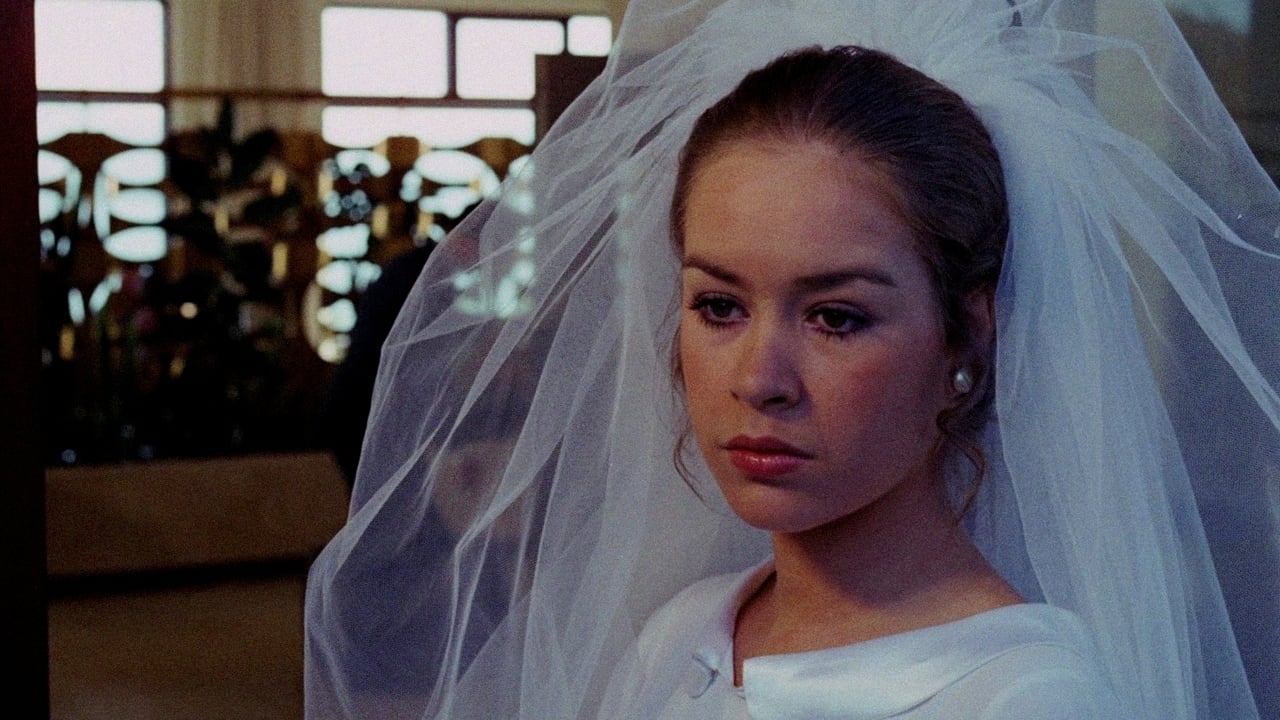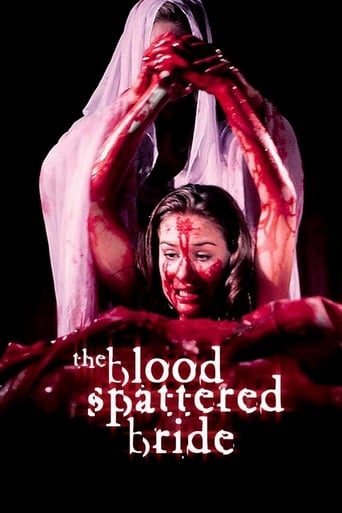

Vicente Aranda was one of the finest directors to emerge from the Spanish transition to democracy, overshadowed by film "auteurs" such as PedroAlmodóvar, Víctor Érice, or the late period of Luis García Berlanga. Often dismissed as merely a cultivator of exploitation-style cinema, with abundant nudity and sometimes over-the-top sexual scenes, he was an excellent translator of literature into film, but also a clear, if subdued, visual stylist, who knew how to capture the complexities of Spanish culture, both popular and learned, and history -traumatic in the extreme- during the second half of the Twentieth Century. This film, one of his earlier works, already exhibits the feminist stance that appears over and over again in his more famous films -"La pasion turca", "Amantes", "Si te dicen que caí", "Carmen", even, perhaps, "Tirante el Blanco"-: his female protagonists are always endowed with agency, strong, impetuous, free, even when the structures of male domination in society are most powerfully ranged against them. As some other IMDb reviewers have observed, an appreciation of "The Blood-Spattered Bride" as simply a vampire film, one more of the abundant slew of early 70s, erotic-horror offerings from Europe (and the UK's Hammer, etc.) is simply wrong. Much of the imagery is not only surrealist, but deliberately echoes Buñuel - Spain's greatest classic film auteur, surrealist and ironic to the core-: the beach scene -brilliant- evokes "Un chien andalou" and the diver-suited customer at "Belle-de-jour"'s brothel; Carmilla's sucking the blood from Susan's palm again quotes 1930's Buñuel/Dali, etc. One clear theme, underscored by the surrealist touches, is that the boundary between real and unreal, dream and waking reality is not stable, but blurred. The other central theme is the horror of male domination and the justice of women's rebellion against it: in the French version, not only is horrible hubby a cruel hunter, and a chillingly manipulative and cruel husband, he is also a child-molester who forces oral sex on 12 year old Carol, only a day or two after his marriage to Susan. The scene, despite being tastefully-filmed, is disgusting, shocking (more than anything else in this work) and seems to utterly justify Carmilla and Susan's later blood-spree. The photography is beautiful, and the structure of the film is extremely precise in conveying its dual message: concerning the multiple readings "reality" offers to the imagination, and in rendering clear the final statement that despite gender violence, women will continue to live and fight for their freedom.
... View MoreI remember when this film was first released in the U.S. I did not see it but heard about it quite a bit and so the title was very familiar to me when I ran across it recently on DVD. I watched it and liked it much better than I thought I would.The main reason for this was that, unlike the trailer, the movie itself centers not on the bride but on the male lead, played by handsome Spanish actor Simón Andreu.After suffering through such films as "Naked You Die," in which annoying female characters with annoying mannerisms take up most of the screen time, "Blood Spattered Bride" was a relief. It has an historical and social significance as well, since males now well over 40 (for whom the film was made) see it through very different eyes than those born after 1980.You already know the plot--here's what the other reviewer's won't tell you: "Blood Spattered Bride" dramatizes many real-life rifts between men and women. Men want sex...women don't. Men like to be happy...women don't. Men are realists...women are romanticists. In "Blood Spattered Bride," the two worlds conflict and the fems decide the men have got to go. If you have ever worked in an American business office in the post-1980 world (run by women as they are), this should sound very familiar to you. However, whereas women are the victors in the 21st century, "Blood Spattered Bride" gives us a refreshing look back at the good old days, when men were in charge--and so, justice is dispatched at the films wonderful climax.The only change I would make is to have it set in a tiny village of the 19th century. This way, the wealthy husband's act of retribution could theoretically go without punishment by society. As it is, the final shot is of a newspaper headline letting us know he's in big trouble.A great little film. See it, if you haven't already.
... View More"The Blood Spattered Bride" is another adaptation of Sheridan LaFanu's classic tale of lesbian vampires, and it's quite good. While it's certainly not on pair with Roger Vadim's beautiful "Blood and Roses" or Carl Theodore Dreyer's "Vampyr" for that matter, mainly because it hasn't aged too well in comparison to the previous two, but it's a very bizarre and unique vampire movie in it's own right. The film is skillfully directed by Vicente Aranda, who, aside from creating a brooding Gothic atmosphere from the opening to the gory ending, also crafts a surprisingly intelligent script, that takes the basic old premise under a totally different perspective. The story here is basically set up as metaphor for women striking against men, and at times, it actually feels like "I Spit on Your Grave" with vampires. It also explores the themes of repressed sexuality, and how the supernatural aspects are merely hallucinations caused by the protagonist's sexual frustration, a theme which was also explored in "Blood and Roses". Fernando Arriba's gorgeous cinematography gives the film a touch of class, as well as creating a dreamlike, otherworldly tone. Overall, a very interesting and often disturbing piece of the 'lesbian vampire' sub-genre. I highly recommend this to fans of Jean Rollin, as it has a similar style to that of the director, and is about just as good as anything he has ever done. 7/10
... View MoreThe wet-blanket editors at "Maltin's Movie Guide" have done it again. "Poorly done," they sniff, giving a measly 1 1/2 stars to Spanish director Vicente Aranda's 1972 offering, "The Blood Spattered Bride." Countering this claim is the very laudatory review in "DVD Delirium," which describes the picture with words such as "bizarre," "visceral," "sexy" and "dreamlike." I concur. This film, I feel, presented in its uncensored form on this great-looking DVD from Blue Underground, should prove a godsend of sorts for all lovers of adult Eurohorror. In it, a new bride moves into the childhood home of her husband, and is soon plagued by stroboscopic and hideously, uh, heart-gripping dreams featuring a beautiful blond woman. When her husband finds this dream gal buried naked at the beach, with only her snorkel protruding from the surface (one very strange scene, lemme tell you!), and brings her back home, that's when the fun begins, as the woman, Carmilla (yes, this IS another variation of Sheridan Le Fanu's oft-filmed 1871 novella), turns out to be nothing less than a bloodsucking...but perhaps I've already said too much. Featuring uniformly fine acting by all (sexy Maribel Martin as the young bride, giallo favorite Simon Andreu as the perplexed husband, the ridiculously gorgeous Alexandra Bastedo as Carmilla, and Rosa Rodriguez as a pretty 12-year-old who, in perhaps the film's strangest scene, drinks from a humongous cup of coffee), a subtle yet effective score by Antonio Perez Olea, beautiful outdoor photography of woodlands, seaside and moldering crypts, and some genuinely shocking bursts of gory carnage, this movie is my idea of an almost perfect horror package. Peppered with psychosexual allusions and concluding on a note both bleak and grisly, the film was a very pleasant surprise for me, and one that I do highly recommend. If you love the great "Daughters of Darkness," you should certainly suck this one right up. Don't trust Maltin here; trust me!
... View More